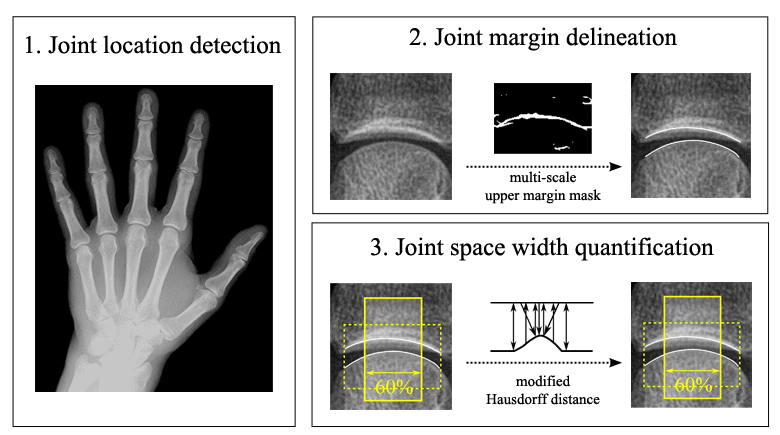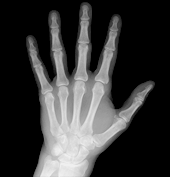Yinghe Huo, Koen L. Vincken, Désirée van der Heijde, Maria J.H. De Hair, Floris P. Lafeber, and Max A. Viergever, University Medical Center Utrecht, Utrecht, The Netherlands

Currently, the assessment of joint space width (JSW) on hand X-ray images of patients suffering from rheumatoid arthritis (RA) is a time-consuming task. Manual assessment is semi-quantitative and is observer-dependent which hinders an accurate evaluation of joint damage, particularly in the early stages. Automated analysis of the JSW is an important step forward, since it is observer-independent and might improve the assessment sensitivity in the early RA stage. This study proposes a fully automatic method for both joint location and margin detection in early RA hand radiographs. The location detection procedure is based on image features of the joint region and is aided by known geometric relationships of finger joints. More than 99% of joint locations are detected with an error smaller than 3 mm with respect to the manually indicated gold standard. The joint margins are detected by combining intensity values and spatially constrained intensity derivatives, refined by an active contour model. More than 96% of the joints are successfully delineated. The JSW is calculated over the middle 60% of a landmark-defined joint span, using a modified Hausdorff distance. The overall JSW deviation compared with the ground truth is 6.8%. In conclusion, the proposed method is able to automatically locate the finger joints in early RA hand radiographs, and to automatically quantify the JSW of these joints. It may be expected that joint space narrowing can be detected more timely with our quantitative measurements than by the conventional ordinal scores. To support this, our future research will notably include applying the automatic approach to large-scale cohorts, so as to examine whether the approach has an increased sensitivity to change compared with the conventional scoring methods.
Keywords: finger joint detection, joint space width quantification, hand bone segmentation, rheumatoid arthritis

